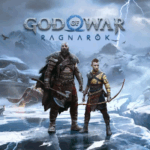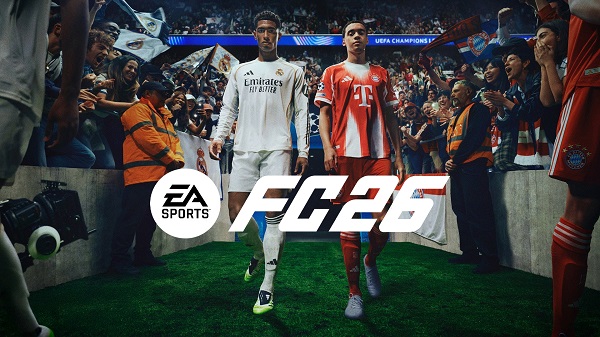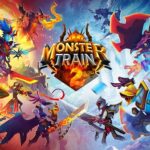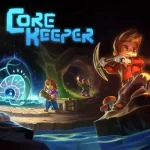Popular Now
Hideo Kojima’s Death Stranding, released on November 8, 2019, defies traditional video game storytelling. Set in a post-apocalyptic United States, the game follows Sam Porter Bridges. He reconnects isolated communities via the Chiral Network after the Death Stranding blurs life and death. The gameplay, focused on delivery and traversal, sparks mixed reactions. However, the narrative weaves philosophy, emotion, and culture into a complex tapestry. This article explores a specific issue: the metamodern structure. It oscillates between sincerity and irony, connection and isolation, hope and despair. By analyzing this approach, we uncover Kojima’s unique storytelling vision. It challenges players to find meaning in a fragmented world.
The Genesis of a New Narrative Vision
Kojima’s Post-Konami Ambition
After leaving Konami in 2015, Hideo Kojima founded Kojima Productions. He aimed to create something innovative. In 2016, Death Stranding debuted at E3. The trailer featured Norman Reedus as Sam Porter Bridges holding a baby in a desolate landscape. This marked Kojima’s vision for a “strand game.” It emphasized connection over conflict, distinct from existing genres. The cryptic imagery hinted at existential themes, setting a bold narrative tone.
Metamodern Foundations
The early trailers introduced a metamodern sensibility. This term, coined by Timotheus Vermeulen and Robin van den Akker, blends modernist sincerity with postmodern irony. Kojima combined heartfelt moments with surreal elements. Examples include the Bridge Baby (BB) in a pod and eerie Beached Things (BTs). This oscillation became the narrative’s backbone. It invited players into a world both earnest and bizarre.
Building the World of Strands

The Concept of the Beach
At The Game Awards 2017 and E3 2018, Kojima revealed more details. The Beach emerged as a key concept. It’s a liminal space between life and death where souls reside. Heartman later explains its uniqueness to each individual. Shaped by beliefs and experiences, it reflects personal identity. However, the Death Stranding entangled it with the living world. This caused voidouts and BTs, adding narrative tension.
Early Narrative Challenges
The trailers showcased stars like Mads Mikkelsen and Léa Seydoux. They also introduced timefall and chiralium. These elements intrigued fans but raised concerns. Some worried Kojima’s complexity might overshadow emotion. This period highlighted a critical challenge. Balancing dense lore with accessible storytelling became essential for the game’s success.
The Release and Initial Reception
A Polarizing Narrative
Upon release, Death Stranding divided critics. Russ Frushtick of Polygon called it “a long, confusing, deeply strange movie.” He noted it felt like two games in one. Sam’s quest to reconnect America intrigued some. Others found it verbose and unsubtle. This reflects metamodern tension. It blends sincere themes with self-aware absurdity, like urine grenades.
The Role of Cutscenes
The game relies heavily on cutscenes. They often deliver lengthy expositions. Characters like Deadman and Heartman explain lore details. These include voidout mechanics and the Chiral Network. Yet, they serve a purpose. They mix genuine emotion, like Sam’s bond with Lou, with parodic sci-fi. This challenges players to embrace both aspects.
The Metamodern Lens: Oscillation in Storytelling
Defining Metamodernism in Death Stranding
Metamodernism involves constant oscillation. It balances hope and despair, connection and isolation. Simon Radchenko’s 2023 analysis in SAGE Journals supports this. He highlights “constructionism, desire for ‘we,’ empathy, and object-oriented relations.” The game’s theme of reconnection is sincere. However, bizarre elements like BTs add postmodern playfulness.
Examples of Oscillation
- Sincerity vs. Irony: Sam’s dedication shines in moments like rocking Lou. Yet, urine grenades introduce absurdity.
- Individual vs. Collective: The Beach is personal. The Chiral Network, however, aims for collective unity.
- Hope vs. Despair: The apocalyptic setting feels bleak. Sam’s mission, though, offers hope.
The Role of the Bridge Baby (BB)
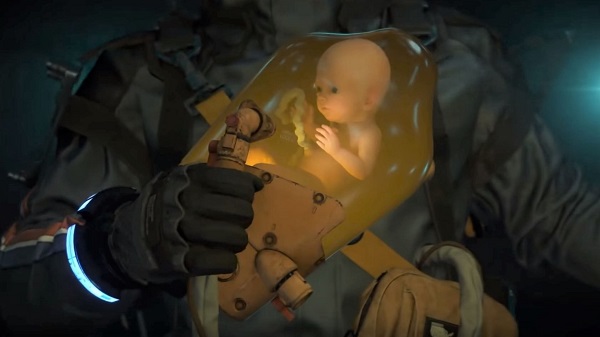
A Symbol of Connection
The Bridge Baby, or BB, is central. It’s a fetus in a pod detecting BTs. Named Lou, it’s both a tool and an emotional anchor. Sam forms a parental bond with her. This blends modernist science with human-like reactions. The duality challenges perceptions of dehumanization.
Narrative Impact
Cutscenes show Sam soothing Lou. Gameplay mechanics, like rocking the controller, reinforce this. The bond feels tactile and real. However, the lore reveals BBs as disposable. This ironic cruelty contrasts with Sam’s attachment. It deepens the emotional narrative.
The Chiral Network: A Metaphor for Metamodern Connectivity
Rebuilding Society
The Chiral Network powers connectivity. It’s a super-fast internet tied to the afterlife. Sam’s task is to link Knot Cities and prepper bunkers. This symbolizes collective restoration. It reflects a metamodern “we” identity, as Radchenko notes.
Asynchronous Multiplayer
The asynchronous system shines. Players share bridges and ziplines without direct interaction. They leave “likes” for each other’s work. This fosters community remotely. It balances isolation with collective effort, a metamodern hallmark.
The Antagonist: Higgs and the Nihilistic Counterpoint
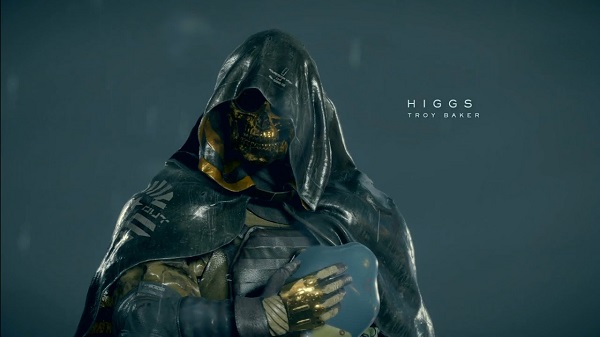
The Villain’s Role
Higgs Monaghan leads Homo Demens. He aims to hasten extinction. His nihilism opposes Sam’s mission. Theatrical monologues and powers add irony. Yet, his tragic backstory evokes empathy. This creates a metamodern balance.
The Final Confrontation
The climax pits Sam against Higgs. It’s a Metal Gear Solid-style battle. Sam punches a teleporting foe in a tar-filled arena. This blends epic drama with absurdity. It captures Kojima’s metamodern vision.
The Ending: A Metamodern Resolution
The Big Reveal
The ending unveils a twist. Amelie and Bridget Strand are one Extinction Entity (EE). Their Beach connection triggered the Death Stranding. Sam chooses to save Lou and live isolated. This oscillates between despair and hope.
Emotional Impact
The bond with Lou carries weight. She’s freed, symbolizing hope. Yet, the game leaves questions unanswered. This reflects metamodern ambiguity. Players ponder personal ties versus cosmic fate.
Post-Release: Cultural and Philosophical Reflections
The COVID-19 Parallel
By April 2025, the game hit 20 million players. Its themes mirrored COVID-19. Isolation and reconnection resonated during lockdowns. Polygon notes its cultural significance. It reflects societal shifts effectively.
Philosophical Depth
The game explores life, death, and connection. It draws on existential and phenomenological ideas. The Beach raises mortality questions. Chiral imagery plays with time. This depth, paired with absurdity, invites reflection.
Legacy and Death Stranding 2: On the Beach
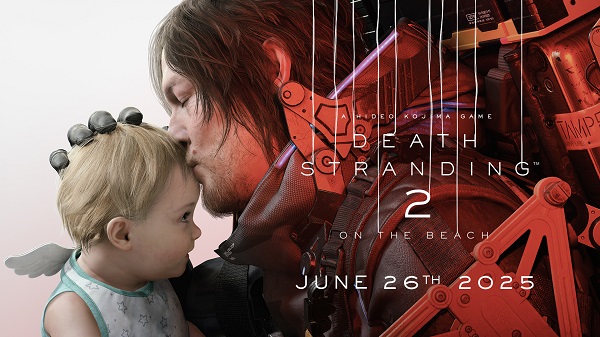
Evolving the Narrative
Death Stranding 2: On the Beach launched on June 26, 2025. It adds Tomorrow and new settings like Mexico. Kojima rewrote it for COVID-19 relevance. This maintains the sincerity-innovation balance.
Critical Reflections
Reviews praise improved gameplay. Yet, they note overreliance on twists. The Corpus system clarifies lore. It addresses opacity while keeping mystery. This upholds the metamodern spirit.
Conclusion
Death Stranding’s narrative is a bold metamodern experiment. It weaves sincerity and irony, connection and isolation. The Bridge Baby, Chiral Network, and Beach reflect this duality. Despite verbose cutscenes, its cultural impact shines. Post-COVID, it remains relevant. As Death Stranding 2 continues, Kojima’s approach inspires interactive storytelling.







